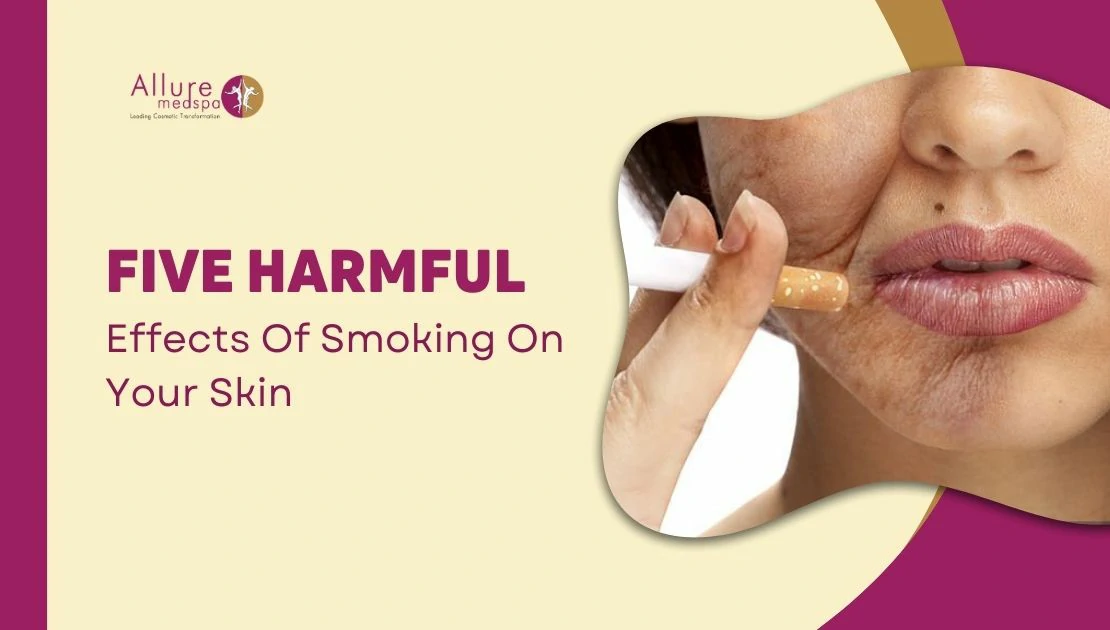How Smoking Damages Your Skin: 5 Clear Ways (Plus FAQs)
Smoking doesn’t just impact your lungs and heart—it also accelerates skin aging, dulls your complexion, and raises the risk of several skin conditions. Here’s what it does and how quitting helps.
Contents
- Introduction
- 1. Premature Wrinkles and Early Aging
- 2. Skin Pigmentation and Discoloration
- 3. Acne Inversa (Hidradenitis Suppurativa)
- 4. Worsening of Pre-Existing Skin Conditions
- 5. Increased Risk of Skin Cancer
- Conclusion
- FAQs
Introduction
You’ve heard the warnings—“smoking is injurious to health.” Beyond systemic effects, smoking visibly harms your skin. Below are the main ways smoking impacts skin quality and health.
1. Premature Wrinkles and Early Aging
Skin firmness depends on collagen and elastin. Chemicals in smoke—nicotine included—damage these proteins and constrict blood vessels, reducing oxygen and nutrient delivery. Expect faster fine-line and wrinkle formation, especially around the eyes, mouth, and forehead. Repeated lip pursing also deepens vertical lip lines.
2. Skin Pigmentation and Discoloration
Reduced blood flow dulls the complexion and can trigger excess melanin production, causing hyperpigmentation. Smokers often notice darkened lips, yellowed fingers, and uneven skin tone; tar and nicotine can stain skin, and reduced elasticity contributes to sagging under the eyes and along the jawline.
3. Acne Inversa (Hidradenitis Suppurativa)
Smoking is linked with higher rates of this painful disease, characterized by inflamed, tender nodules under the skin that may form tunnels and drain. Inflammation driven by smoking can worsen severity and recurrence, complicating treatment.
4. Worsening of Pre-Existing Skin Conditions
Smoking aggravates psoriasis and rosacea, slows wound healing, and raises infection risk. Disruption of immune responses increases flares (e.g., palmoplantar pustulosis) and susceptibility to bacterial, fungal, and viral skin infections.
5. Increased Risk of Skin Cancer
Cigarette smoke contains carcinogens that elevate the risk of squamous cell carcinoma, which may appear as rough, scaly patches or wart-like growths that bleed or crust. Smoking weakens DNA repair, making malignant change more likely.
Conclusion
From premature aging and pigmentation to inflammatory diseases and cancer, the skin toll of smoking is substantial. The upside: skin can improve after quitting. Pair cessation with a targeted skincare routine and professional guidance to restore radiance and resilience.
Frequently Asked Questions (FAQs)
Q1. Can quitting smoking reverse skin damage?
Yes. Some damage may be permanent, but cessation improves circulation, supports collagen production, and can gradually restore glow and texture.
Q2. How long until skin improves after quitting?
Many see visible improvements in 4–6 weeks, with continued gains in tone, elasticity, and brightness over several months.
Q3. Are treatments available for smoking-related skin damage?
Yes—options include chemical peels, laser therapy, and microneedling to target pigmentation, texture, and collagen remodeling. Consult a dermatologist for a personalized plan.
Q4. Does secondhand smoke affect skin?
Absolutely. Secondhand smoke accelerates oxidative stress and aging, contributing to dullness, irritation, and inflammation.
Q5. What skincare ingredients are helpful for smokers?
Look for antioxidants (vitamin C), retinoids (night use), niacinamide, and hydrating agents like hyaluronic acid. Daily broad-spectrum SPF is essential.
Tip: If you’re ready to quit, ask your clinician about evidence-based cessation aids and support programs.











